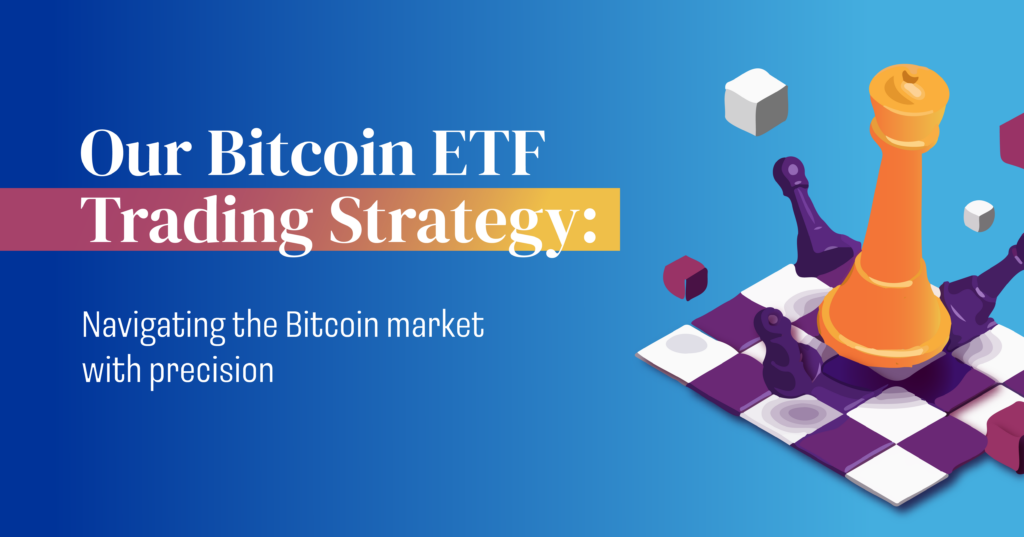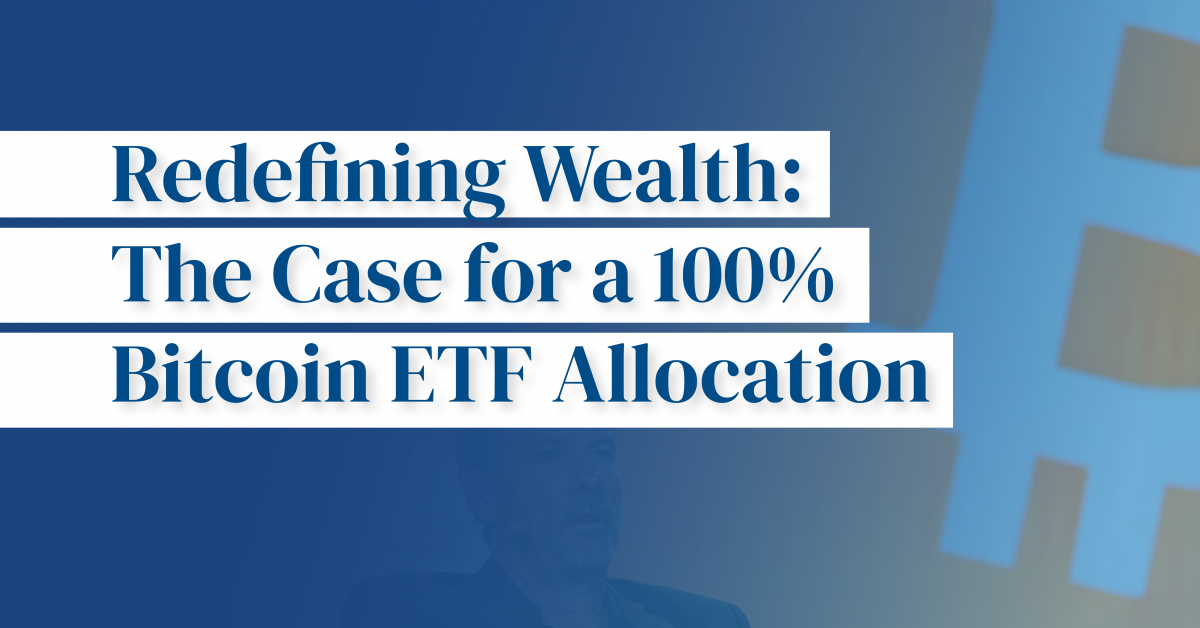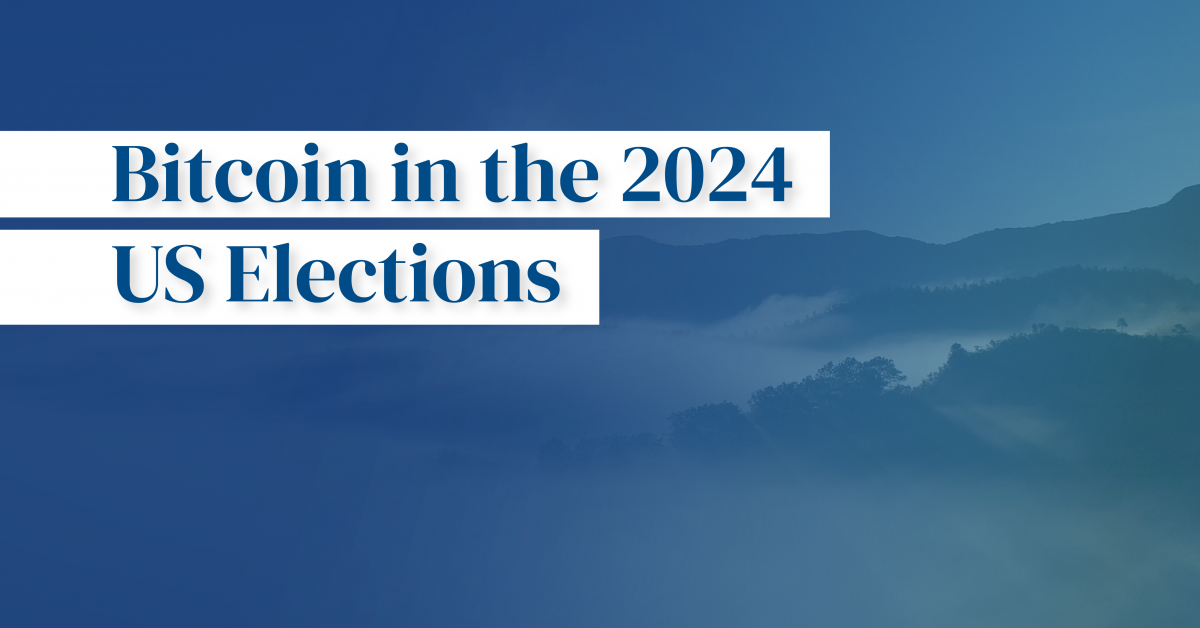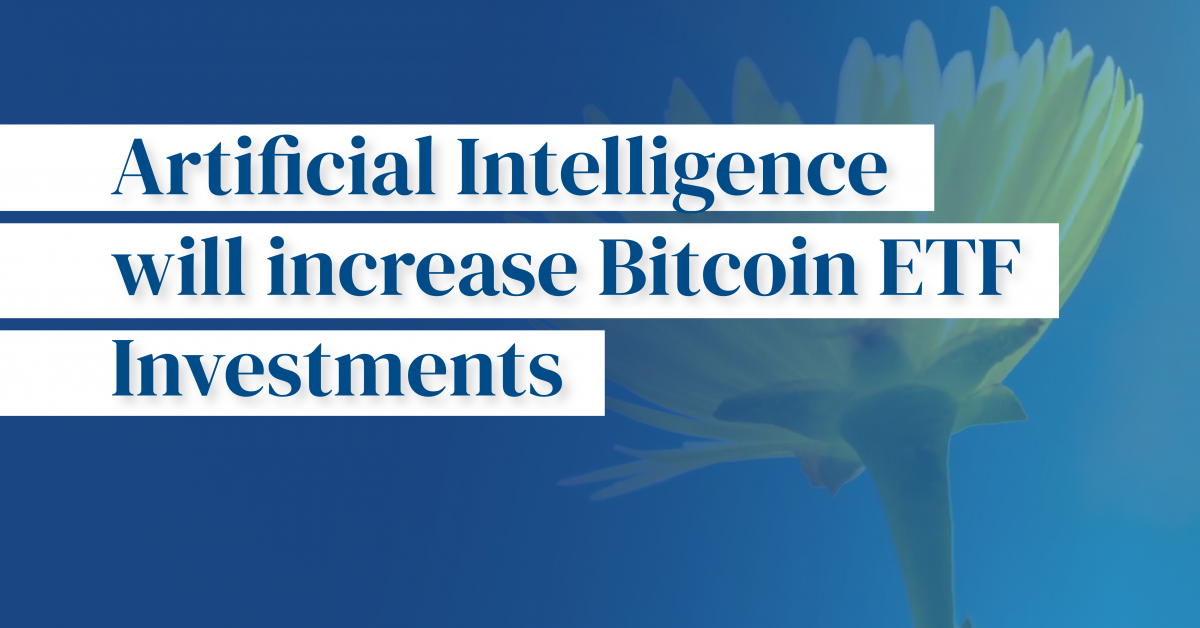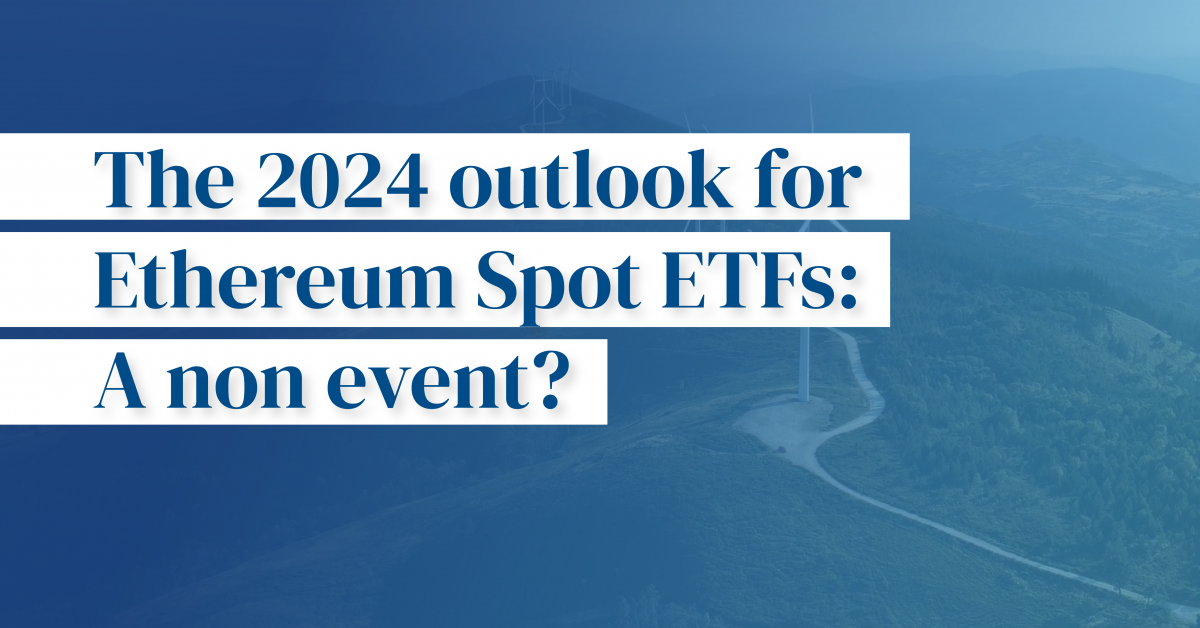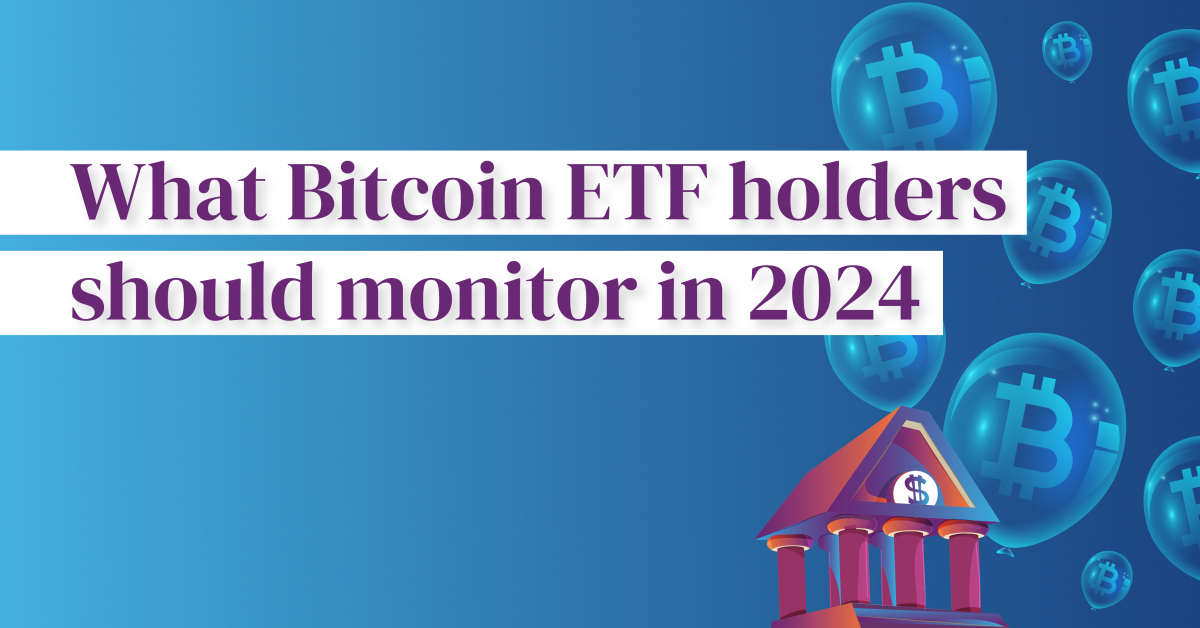In the ever-evolving landscape of financial assets, Bitcoin Exchange-Traded Funds (ETFs) have carved a niche that marries the cutting-edge world of crypto currencies exchange with the traditional realm of investment assets. These innovative ETFs offer a way for investors to gain exposure to Bitcoin, the pioneering currency, without the complexities of direct ownership, such as securing private keys or dealing with cryptocurrency exchanges. Since their inception, Bitcoin ETFs have grown significantly in both popularity and accessibility, marking a pivotal development in the future integration of crypto currencies into mainstream finance.
Bitcoin ETFs trace their origins to the early days of Bitcoin’s rise, mirroring the crypto currency’s journey from a niche crypto asset to a globally recognized financial instrument. They have become particularly appealing to investors looking to diversify their portfolios with digital assets while still operating within a regulated and familiar exchange-traded framework. However, investing in Bitcoin ETFs is not without its challenges. The inherent volatility of Bitcoin, driven by factors like regulatory shifts, technological advancements, and Bitcoin ETF market sentiment, directly impacts these ETFs, making them a potentially high-uncertainty yet high-reward investment. This volatility, coupled with the relatively nascent nature of the cryptocurrency, presents a unique set of challenges and opportunities for investors.
Understanding the Bitcoin ETF Market
Bitcoin ETFs, or Exchange-Traded Funds, represent a revolutionary future intersection of traditional finance and the burgeoning world of cryptocurrencies. These financial instruments are designed to track the price of Bitcoin, a more offering investors accessible and regulated avenue to invest in this crypto asset.
There are several investments solutions for the Bitcoin ETFs. There are primarily two types of Bitcoin ETFs. The first type directly holds Bitcoin, meaning the ETF’s performance is closely tied to the actual movements of Bitcoin’s price. These funds offer direct exposure to the price volatility of Bitcoin, mirroring its rises and falls. The second type, more complex, involves ETFs based on Bitcoin futures contracts. These do not hold Bitcoin directly but rather contracts that speculate on the future price of Bitcoin. These crypto approach can sometimes lead to a divergence from the actual price movements of Bitcoin, as futures or equities, can be influenced by additional factors like investor expectations and interest rates. Another type of Bitcoin ETFs provides exposure to the Bitcoin thematic without directly holding Bitcoin itself.
Bitcoin’s volatility is legendary and can be attributed to several factors. Market sentiment plays a crucial role – news about regulatory changes, technological advancements, or influential endorsements can swiftly alter investor behavior. Additionally, Bitcoin’s relatively limited liquidity compared to traditional assets contributes to its sharp price movements. Its decentralized nature also means it’s less influenced by government policies but more susceptible to the ETF market sentiment and speculative investing.

The Challenge of Market Timing in Bitcoin ETFs
Navigating the Bitcoin ETF trading environment is akin to sailing in uncharted waters, where unpredictability is the only constant. This segment of the crypto world is not only volatile but also deeply influenced by a multitude of factors, mainly monetary exchange, making the timing of trade entries and exits an exceedingly complex endeavor.
At the heart of the challenge is the inherent volatility of Bitcoin prices. Unlike traditional stocks, where price movements can often be linked to company performance or broader economic indicators, Bitcoin ETFs are swayed by an array of unpredictable factors. For instance, a single tweet from a high-profile individual can send prices soaring or plummeting. In April 2021, Bitcoin experienced a dramatic fall after a tweet by Elon Musk raising concerns about Bitcoin ETF’s environmental impact. Such events underscore the difficulty in forecasting price movements and timing the trade effectively. However, all the Bitcoin miners have collectively decided to make their Bitcoin operations more sustainable, leading to a smoother and more environmentally friendly Bitcoin transition.
Global events and overarching crypto trends heavily influence Bitcoin ETFs. Economic crises, geopolitical tensions, or even global pandemics, as seen with COVID-19, can lead to increased interest in cryptocurrencies as a perceived safe haven or alternative investment, thereby affecting ETF prices. Similarly, a trend towards greater digital currency acceptance by businesses and governments can positively impact Bitcoin ETF values. However, the reverse is also true; negative sentiments or regulatory clampdowns can cause sharp declines.
See How Melanion Capital Can Guide You to Your Financial Wealth
We’ll explain everything you need to know about Bitcoin ETFs: from how they work, why investors are turning to them, and how they compare with other cryptocurrency investments.
Option 1: Dollar-Cost Averaging (DCA)
Dollar-Cost Averaging (DCA) is an investment approach particularly suitable for Bitcoin ETF trading places characterized by volatility, such as Bitcoin ETFs. It involves investing a fixed amount of money into an asset at regular intervals, regardless of the asset’s price at those times. This method contrasts with attempting to time the Bitcoin market, where one aims to buy low and sell high.
Analysis of Bitcoin ETFs over several years has consistently shown that portfolios following a DCA strategy outperform lump-sum investment approaches, especially in terms of risk-adjusted returns. For instance, a retrospective study on Bitcoin investments demonstrate that Comprehensive-Cost Averaging investors saw more stable and less volatile portfolio growth.
Investment occurs at consistent intervals, be it weekly, monthly, or quarterly. This method dilutes the impact of market volatility as the investment cost averages out over time.
1. Mitigating Volatility’s regular investment pattern smooths out the drastic price swings synonymous with Bitcoin. DCA helps in reducing the liability associated with the timing of a lump-sum investment, making it ideal for volatile stocks like Bitcoin ETFs.
2. Simplicity and Accessibility. Unlike active trading, the Dollar-Cost Averaging doesn’t require constant market monitoring, making it a practical choice for a wide range of investors.
Research by the CFA Institute showed that portfolios utilizing DCA experienced lower volatility and more consistent returns compared to lump-sum investing in volatile markets. This was particularly evident in the case of Bitcoin, where it helped in offsetting short-term exchange fluctuations and capitalizing on long-term growth.
DCA is not a rigid strategy. Investors can adjust the frequency and amount of their investments in response to financial changes or market trends, offering a degree of flexibility that is rare in more static investment approaches.
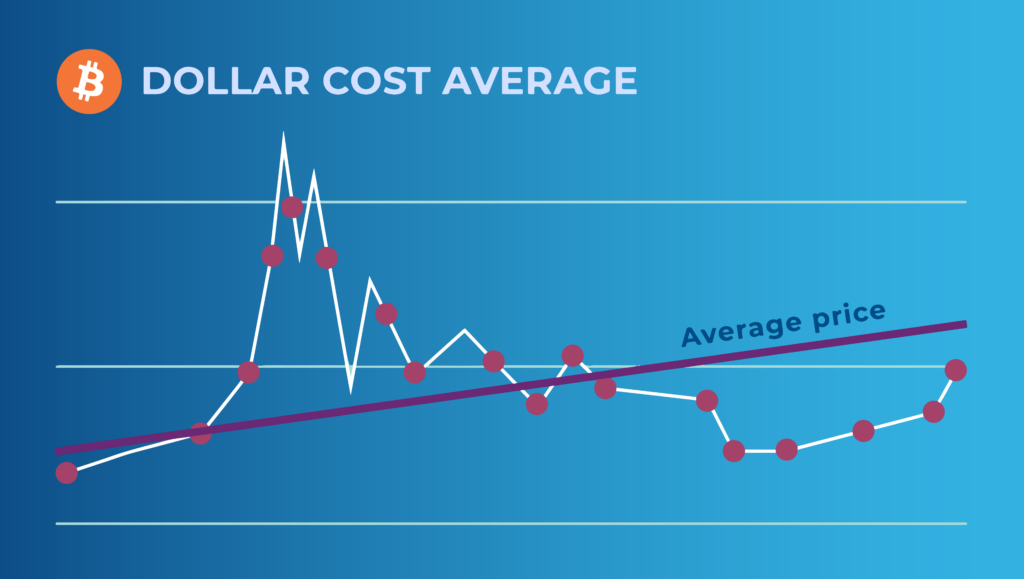
Option 2: Active Trading in Bitcoin ETFs
Active trading in Bitcoin ETFs is a dynamic and nuanced approach, encompassing various styles tailored to different risk profiles and future time commitments. The most common styles include day trading and swing trading, each with unique characteristics.
1. Day Trading: This style involves buying and selling Bitcoin ETFs within the same trading day. Traders capitalize on short-term price movements, often reacting to crypto market news or technical indicators. The goal is to profit from small price fluctuations occurring within a single day. This style demands constant exchange vigilance and quick decision-making, as opportunities can arise and disappear within minutes.
2. Swing Trading: Swing traders hold their positions for several days or weeks, aiming to profit from more significant price shifts. This style requires a keen understanding of trends and momentum. Swing traders often rely on a mix of technical analysis and Bitcoin market sentiment to make their decisions, balancing the need for detailed research with the patience to wait for the right asset opportunity.
Complementing these traditional approaches, emerging strategies are gaining traction among savvy investors navigating the complexities of the Bitcoin ecosystem. Notably, the use of automated hedging bots, powered by advanced algorithms, has become increasingly popular. These bots execute trades with unparalleled speed and frequency, taking advantage of market fluctuations around the clock.
Additionally, the landscape sees a rise in derivatives Bitcoin market making, which involves contracts like futures and options based on Bitcoin. These financial instruments provide investors with the ability to hedge against market volatility, speculate on price movements, and strategically leverage their positions. However, it’s crucial to note that while these strategies offer opportunities, they could also introduce new risks into the equation, requiring careful consideration and risk management.
1. Maximizing Short-Term Gains: Active traders aim to exploit market volatility for quick profits, unlike DCA which focuses on long-term growth.
2. Flexibility: Active trading allows investors to quickly adjust their positions in response to market changes.
3. Leveraging Market Knowledge: Experienced traders can use their insights to make informed decisions, potentially leading to higher returns.
Active trading, while potentially lucrative, comes with significant challenges. One of the biggest pitfalls is the tendency to overtrade. In the quest for profits, traders might make impulsive decisions, leading to unnecessary uncertainty and transaction costs that can erode gains.
Combining DCA and Active Trading
Combining Dollar-Cost Averaging with Active Trading offers a nuanced policy for Bitcoin ETF investors, blending both funds to balance risk and reward. This hybrid approach capitalizes on the strengths of both strategies while mitigating their respective weaknesses.
By employing Dollar-Cost Averaging, investors systematically invest at regular intervals, which cushions against the market’s volatility. This steady investment method reduces the risk of significant losses from ill-timed lump-sum investments. DCA serves as the foundation of the portfolio, providing a consistent growth trajectory over time and alleviating the pressure of timing.
In conjunction with Dollar-Cost Averaging, active trading tactics can be applied selectively. Instead of constantly hedging, investors engage in active trades during periods of clear signals or when they have strong market analysis insights. This portion of the strategy aims to capitalize on short-term market opportunities and can potentially boost overall returns.
Risk Management in Bitcoin ETF Trading
Effective risk management is crucial for investors in the volatile Bitcoin ETF market. It’s essential to diversify investments, not only across different Bitcoin ETFs but also across various asset classes, to mitigate potential losses. Setting stop-loss orders can help limit losses during sudden Bitcoin downturns. Regularly reassessing and adjusting your investment fund based on market changes and personal financial goals is also key. Additionally, investors should only allocate funds they can afford to lose, avoiding overexposure to the high-risk crypto and ETF market. These practices help create a balanced approach, reducing risks while seeking returns in Bitcoin Exchange Traded Funds.
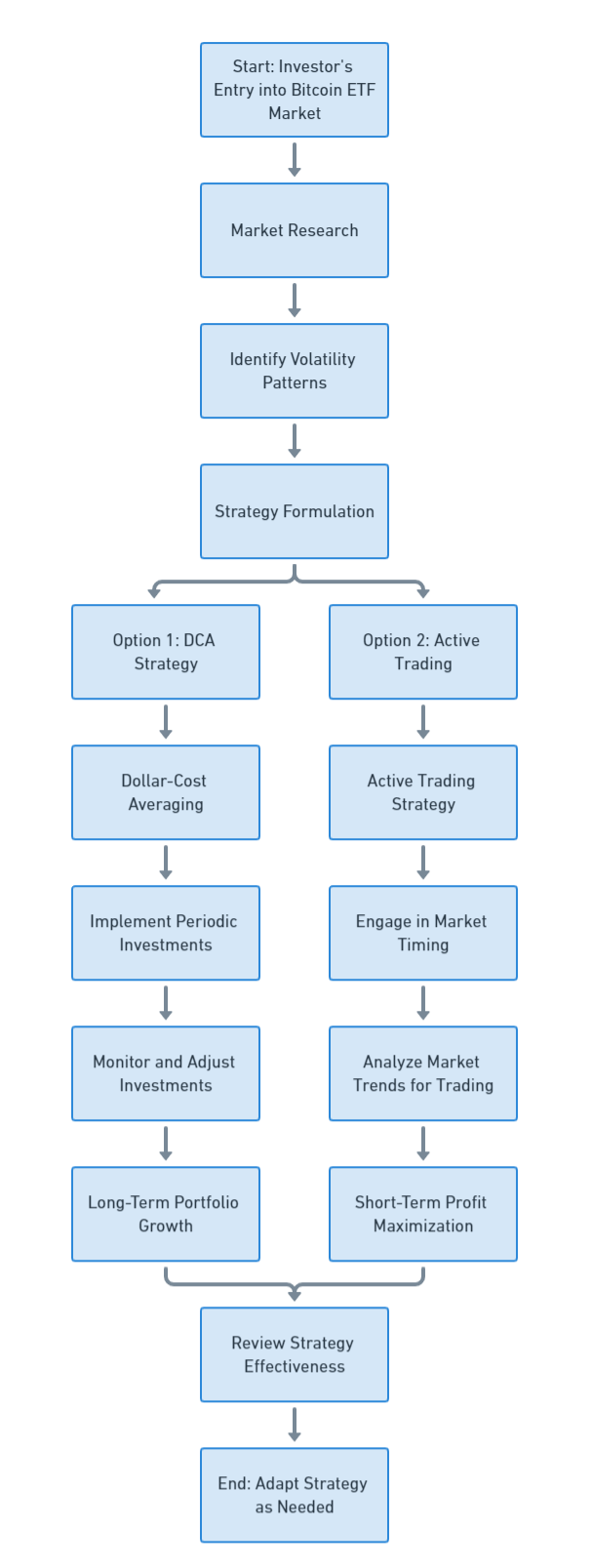
An effective future strategy is never static. The cryptocurrency is renowned for its rapid evolution and unpredictability, demanding constant learning and adaptability from its participants. Keeping abreast of Bitcoin ETF market trends, regulatory changes, and technological advancements is crucial. As the Bitcoin ETF market evolves, so should your strategy, whether it’s fine-tuning your approach to DCA, adapting your active hedging techniques, or even blending both methods to create a more balanced investment approach.
Ultimately, the future success in Bitcoin ETF trading hinges on developing a strategy that not only aligns with your current circumstances but also remains flexible enough to adapt to future market shifts. It’s this combination of steadfastness and adaptability that will equip you to navigate the exciting yet challenging waters of Bitcoin Exchange Traded Funds trading with confidence and precision.
See How Melanion Capital Can Guide You to Your Financial Wealth
We’ll explain everything you need to know about Bitcoin ETFs: from how they work, why investors are turning to them, and how they compare with other cryptocurrency investments.

